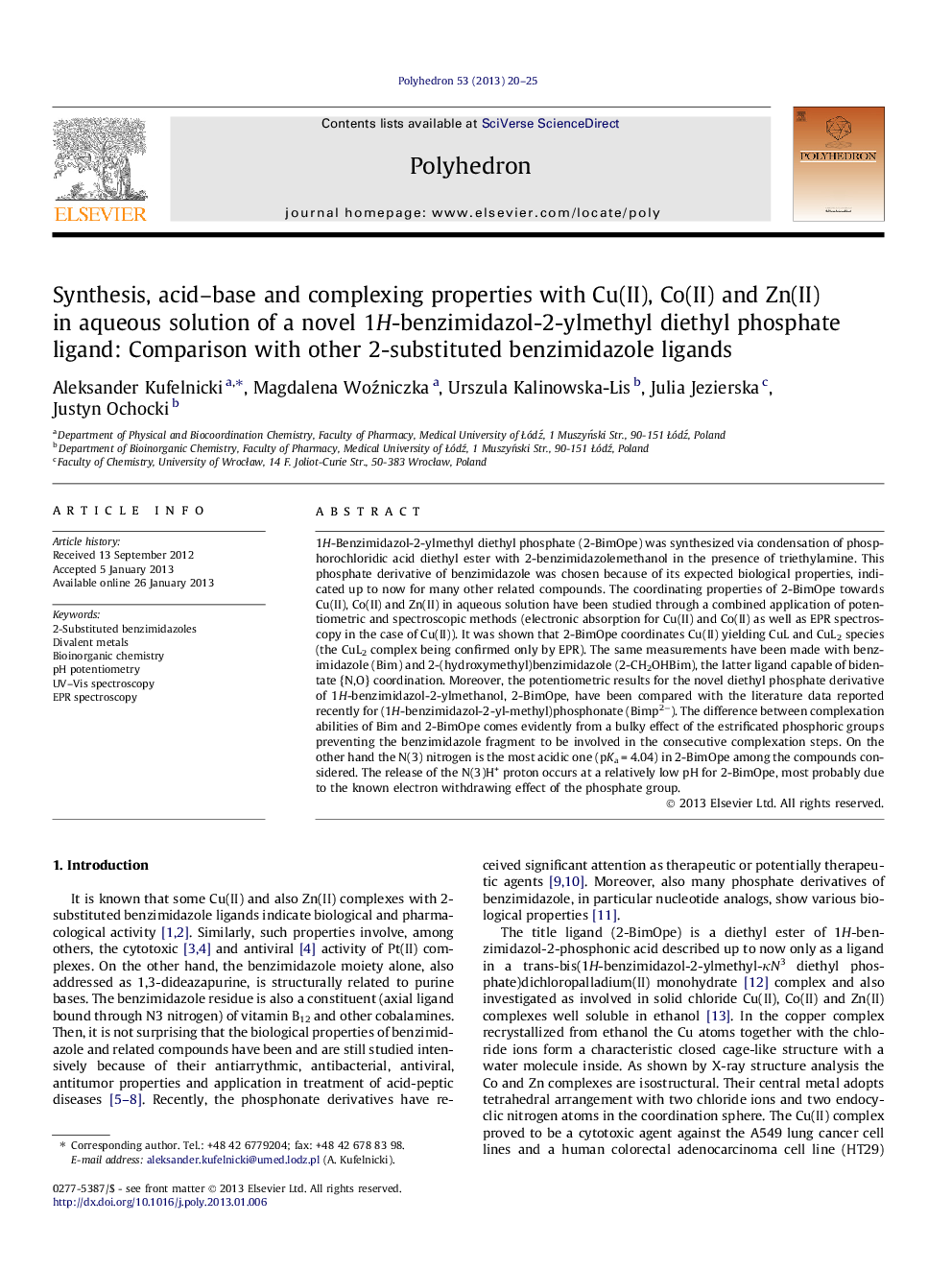| Article ID | Journal | Published Year | Pages | File Type |
|---|---|---|---|---|
| 1335789 | Polyhedron | 2013 | 6 Pages |
1H-Benzimidazol-2-ylmethyl diethyl phosphate (2-BimOpe) was synthesized via condensation of phosphorochloridic acid diethyl ester with 2-benzimidazolemethanol in the presence of triethylamine. This phosphate derivative of benzimidazole was chosen because of its expected biological properties, indicated up to now for many other related compounds. The coordinating properties of 2-BimOpe towards Cu(II), Co(II) and Zn(II) in aqueous solution have been studied through a combined application of potentiometric and spectroscopic methods (electronic absorption for Cu(II) and Co(II) as well as EPR spectroscopy in the case of Cu(II)). It was shown that 2-BimOpe coordinates Cu(II) yielding CuL and CuL2 species (the CuL2 complex being confirmed only by EPR). The same measurements have been made with benzimidazole (Bim) and 2-(hydroxymethyl)benzimidazole (2-CH2OHBim), the latter ligand capable of bidentate {N,O} coordination. Moreover, the potentiometric results for the novel diethyl phosphate derivative of 1H-benzimidazol-2-ylmethanol, 2-BimOpe, have been compared with the literature data reported recently for (1H-benzimidazol-2-yl-methyl)phosphonate (Bimp2−). The difference between complexation abilities of Bim and 2-BimOpe comes evidently from a bulky effect of the estrificated phosphoric groups preventing the benzimidazole fragment to be involved in the consecutive complexation steps. On the other hand the N(3) nitrogen is the most acidic one (pKa = 4.04) in 2-BimOpe among the compounds considered. The release of the N(3)H+ proton occurs at a relatively low pH for 2-BimOpe, most probably due to the known electron withdrawing effect of the phosphate group.
Graphical abstractA novel 1H-benzimidazol-2-ylmethyl diethyl phosphate (2-BimOpe) derivative shows specific coordinating properties towards Cu(II), Co(II) and Zn(II) in aqueous solution as compared with other 2-substituted benzimidazoles. The differences come evidently from a bulky effect of the estrificated phosphoric group and its electron withdrawing effect.Figure optionsDownload full-size imageDownload as PowerPoint slide
